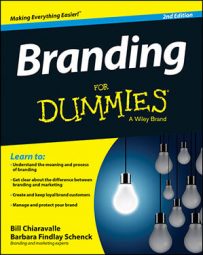One of the best ways to arm yourself with the information you need to build your brand is to do some research on your customers. You may need to delve into the realm of interviews, surveys, and focus groups to get the information you need.
Just ask! Interviews and surveys
Before you take up your customer’s time with an interview or survey, be clear about what you want the research to accomplish. Most research is intended to discover who your customers are and how to reach them, what your customers think of and want from products or services like the ones you offer, and how your customers may react to possible product or marketing innovations or revisions you’re considering.
As you collect information, follow this advice:
If you’re collecting information to clarify your customer profile, you don’t need an in-depth interview or survey. You can collect information through online or in-person customer registration forms, you can host contests that include the requested information on entry forms, or you can issue a customer information update request on a regular basis, perhaps accompanied by a small thank-you gift for those you count among your valuable customer base.
If you’re working to assess levels of customer awareness, interest, or satisfaction, customer opinion surveys are a good tool for the task. You can conduct short surveys in-person at the point of purchase, or you can collect more extensive information through questionnaires delivered via phone, mail, e-mail, or by using the free online survey and polling tools offered by sites such as SurveyMonkey or Zoomerang.
For surveys that involve more than a few questions, don’t go it alone. Enlist professionals who can help develop a survey instrument that collects information about your offerings without spotlighting shortcomings or unduly imposing on your customers’ time. They’ll also help you gain insight without leading customers to the answers you’re seeking, a mistake that makes the research basically worthless.
To balance your dueling desires for customer input and customer satisfaction, keep this advice in mind:
Keep the survey short so it only takes a few minutes of your customers’ time unless you’re dealing with highly loyal customers who are willing to invest more heavily of their time.
Ask specific questions that are more likely to elicit thoughtful and accurate responses. For example, instead of asking, “On a scale of 1 to 10 with 10 being best, how do you rate our service?” ask, “On a scale of 1 to 10 with 10 being best, how satisfied were you with the service you received during your last visit to our business?”
Ask questions that help you understand how customers relate to your product. For example, you may ask, “How closely did our product live up to your expectations?”
Ask questions that reveal how you stack up against competitors. For example, ask, “On a scale of 1 to 10, how convenient is our location compared to the location of other businesses where you can purchase similar products or services?
To see how customers react to a product or marketing idea, or to learn subtleties about what they think or feel, consider talking one-to-one in personal or phone interviews. When conducting interviews, keep the following points in mind:
Be open to any customer response to your idea. If you (or those in a leadership position) already know what you’re going to do and are simply seeking validation, save your time and money.
You may not be the best person to conduct the interview. Generally, people don’t want to burst bubbles or hurt feelings. If a third-party researcher asks for customer opinions, the answers may be 180 degrees different (and more accurate) than what customers would admit to you directly.
Just listen! Using focus groups
Focus groups are best left to the professionals. A focus group is a gathering of customers, prospective customers, or even customers of competitors who share input about a product or marketing idea with a moderator who guides the conversation, prompts input, and manages the discussion so it isn’t dominated by one person or opinion.
Hold a focus group when you want to seriously weigh opinions, reactions, and risks before proceeding with an important product or marketing decision.
If you’re seeking input from a far-flung group rather than meeting in person, participants can meet in an online chat room or web conference. Your social networks are a good place to issue the invitations. Before the focus group session, be clear about the information or idea you’re presenting, the kind of impressions you’re seeking to collect, and the token of thanks you’ll offer in return for participant time and ideas.

